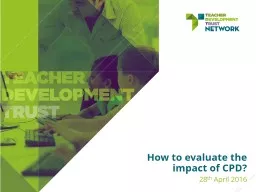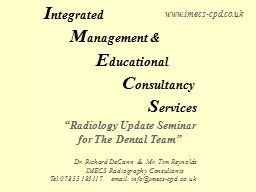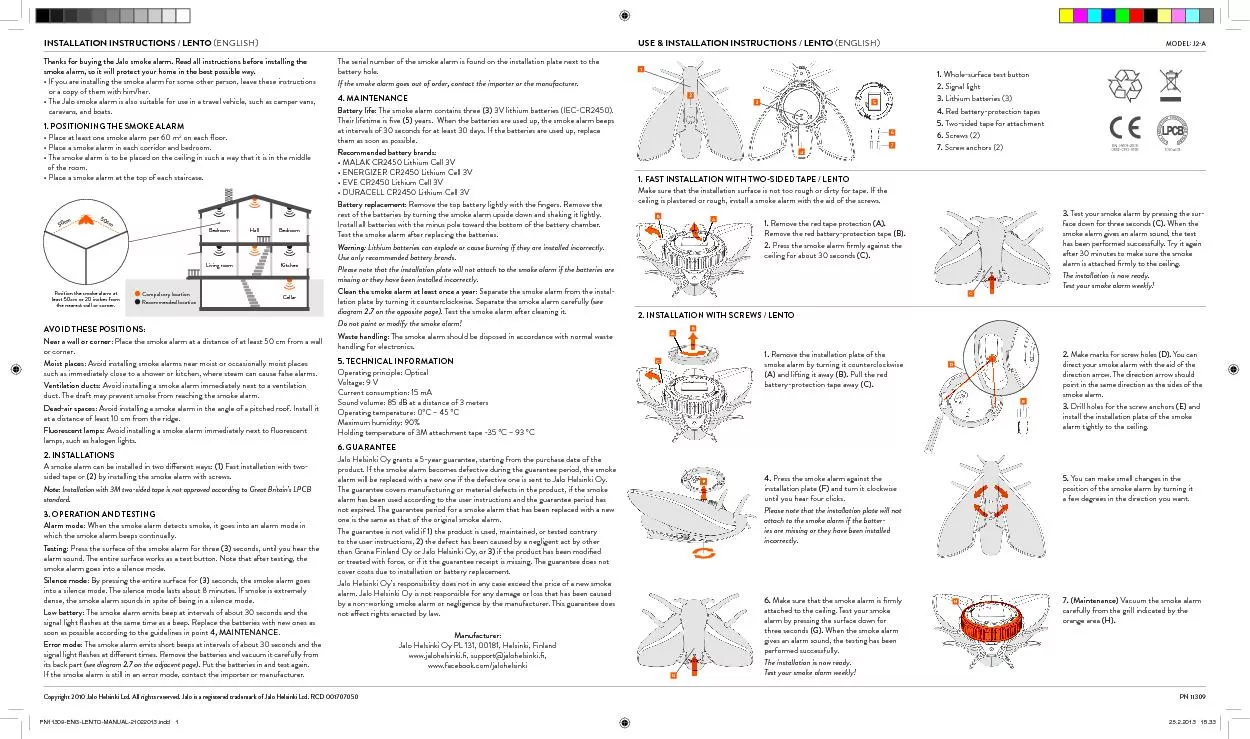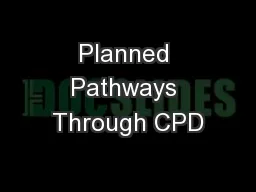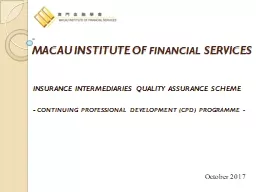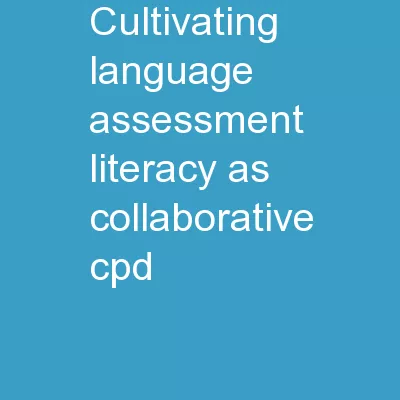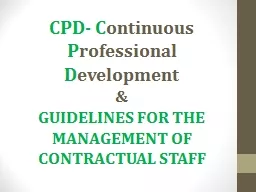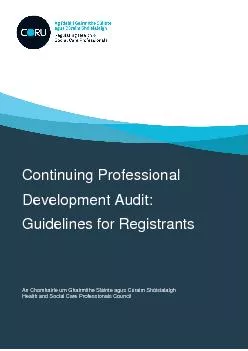PPT-How to evaluate the impact of CPD?
Author : calandra-battersby | Published Date : 2018-03-10
28 th April 2016 About me Bridget Clay bridget89ec Network Programme Manager Teacher Development Trust Former Maths teacher and education consultant for CfBT
Presentation Embed Code
Download Presentation
Download Presentation The PPT/PDF document "How to evaluate the impact of CPD?" is the property of its rightful owner. Permission is granted to download and print the materials on this website for personal, non-commercial use only, and to display it on your personal computer provided you do not modify the materials and that you retain all copyright notices contained in the materials. By downloading content from our website, you accept the terms of this agreement.
How to evaluate the impact of CPD?: Transcript
Download Rules Of Document
"How to evaluate the impact of CPD?"The content belongs to its owner. You may download and print it for personal use, without modification, and keep all copyright notices. By downloading, you agree to these terms.
Related Documents

